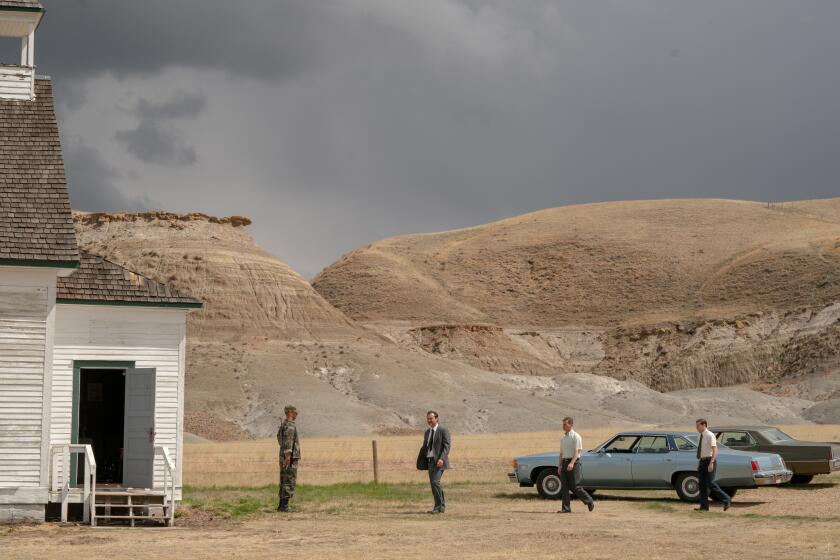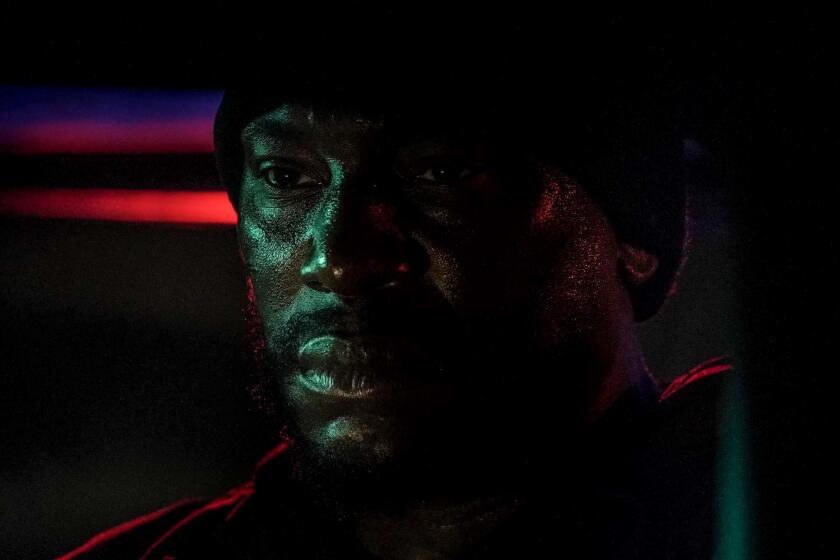Stan Brakhage, 70; Created Powerful Images With His Experimental Films
Stan Brakhage, one of America’s most influential experimental filmmakers, died Sunday in a hospital in Victoria, Canada, after an eight-year struggle with cancer. He was 70.
Over five decades, Brakhage made nearly 380 films, most of them shot in 8 millimeter or 16 millimeter and ranging in length from nine seconds to four hours.
His most famous film, “Dog Star Man” (1964), a unique vision of the cosmos in which Brakhage experimented in the use of color, distorted imagery and alteration of the film stock itself, became one of the first 10 films listed in the Library of Congress’ National Film Registry.
Brakhage was a master of cinematic stream-of-consciousness, creating meaning from a flow of highly eclectic images that seem to be linked only by free association. What in lesser hands would result in a ragtag home-movie jumble emerges in his films as an intensely rhythmic vision of the universe as powerful as it is personal. Brakhage had a special gift for bringing viewers in touch with nature and, therefore, themselves.
A typical example of that gift can be found in the 50-minute, two-part “23rd Psalm” (1966), which features Brakhage’s usual free-moving superimposed images.
It contrasts scenes of Brakhage’s serene domestic existence in rural Colorado with World War II archival footage as a way of expressing Brakhage’s consideration of how the artist and the individual are to respond to war -- specifically, to the Vietnam War, which was then raging. The quick cuts of the first part, depicting a world menaced by chaos, give way to the more contemplative passages of the second, filmed largely in Europe and suggestive of a quest for the roots of war.
Of Brakhage’s series of short films, which he began in 1964 and called “Songs,” Times reviewer Linda Gross wrote in 1976, “In these deeply felt hymns to daily life, skillfully rendered in a restricted medium where texture is grainy and color is desaturated, Brakhage uses a variety of techniques to create a physical, psychological and poetic film totality.”
Brakhage’s work influenced a broad range of filmmakers.
“His radical aesthetic and philosophical approach ... has been borrowed, co-opted, stolen and mutated by a startlingly varied array of directors, studios, cinematic movements and, yes, even corporations,” wrote Jerry Johnson in the Austin Chronicle several years ago. “He’s in your MTV, your Jean-Luc Godard, your Nike commercials, your Oliver Stone and just about every one of your budding and already established experimental filmmakers.”
Reportedly, Brakhage made commercials himself from time to time to pay the bills. But if asked about it, he would simply smile.
For more than two decades, he was also a teacher. He retired last September after a 20-year tenure as a professor of film studies at the University of Colorado at Boulder.
Brakhage was a handsome, bearded, burly man of much warmth who was easily approachable at film festivals.
He was born Jan. 14, 1933, in Kansas City, Mo., in a home for unwed mothers and was adopted three weeks later by a couple who divorced when he was 10. His adoptive mother moved around a lot, and he ended up in a series of foster homes. He became an avid moviegoer, even though he became disenchanted with Hollywood filmmaking.
He landed a scholarship to Dartmouth at 16 but dropped out to return home, which by that time was Denver, and began experimenting with making his own films. In 1963, he made “Mothlight,” composed of moth wings pasted together and run through an optical printer. Along with superimposed images, he also developed a technique of scratching words and other images directly on film and experimented with optical distortions.
One of his earliest major films is “Window Water Moving Baby” (1959), a poetic celebration of Brakhage’s first wife, Jane, giving birth to the first of their five children. He would have two more children by his second wife, Marilyn, who survives him.
“Existence is a struggle, always has been,” said Brakhage in a telephone interview with the Kansas City Star in 2001. “I can’t allow myself too many indulgences when making a movie. My first order of business is to pay off the mortgage on our house.”
More to Read
Only good movies
Get the Indie Focus newsletter, Mark Olsen's weekly guide to the world of cinema.
You may occasionally receive promotional content from the Los Angeles Times.









